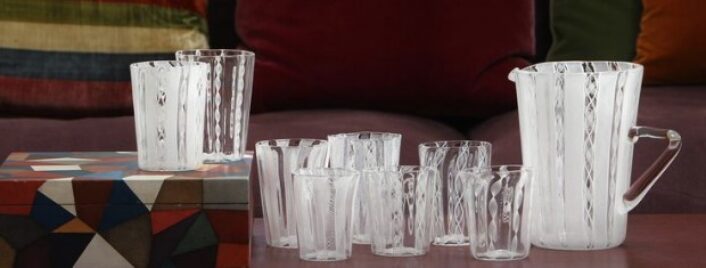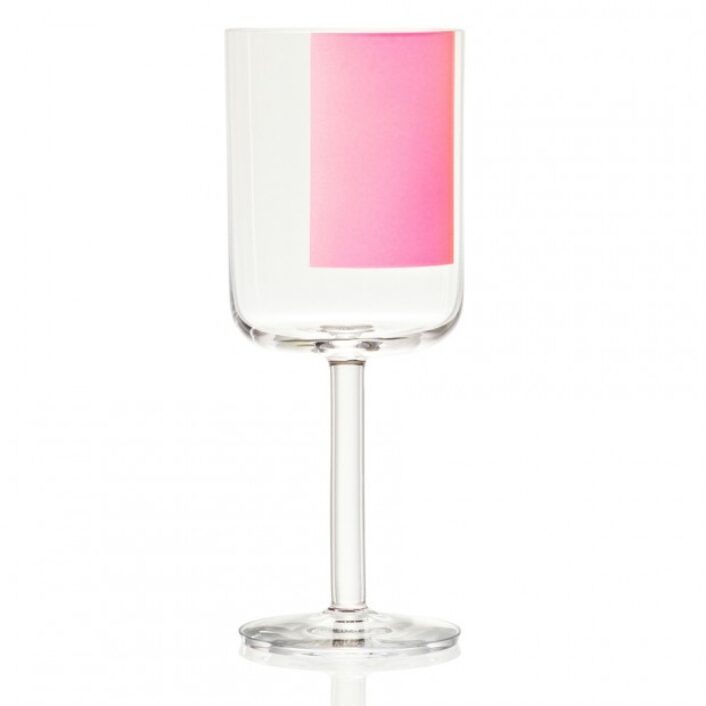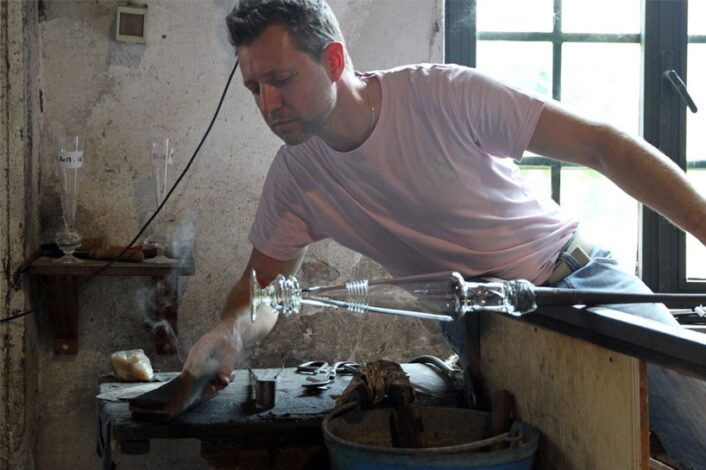A collection of grayish-blue vessels that are made using a wide range of color treatments.
Image courtesy of: Architectural Digest
Design
Paul Arnhold’s glassware
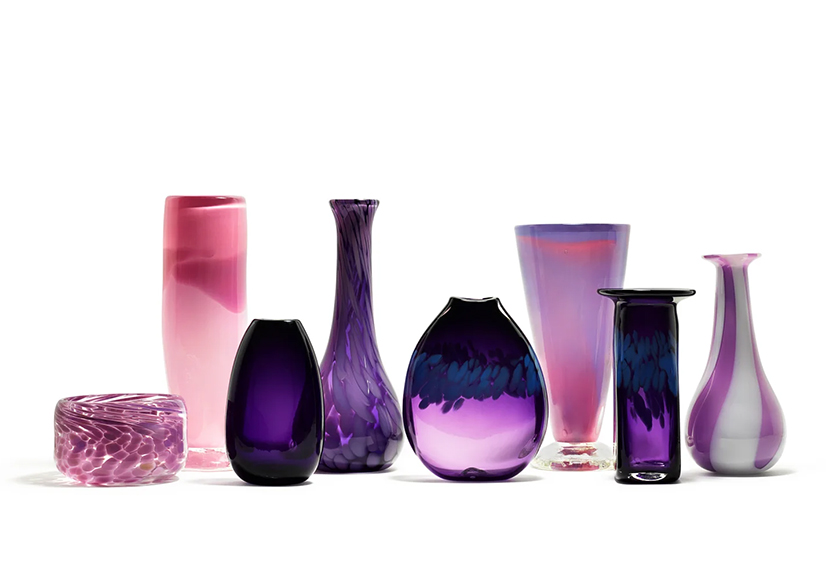
A beautiful collection of purple vessels from Rebecca Gardner’s pop-up shop last holiday season.
Image courtesy of: Architectural Digest
The glassblower Paul Arnhold discovered the art of glassblowing when he attended a summer camp in New Milford, Connecticut. Born and raised in New York City, he still counts the city his home; his unique pieces are made in a pre-Civil War warehouse in Brooklyn.
His West Chelsey apartment is one he shares with his husband, fashion designer Wes Gordon. Living with Gordon, the creative director for Carolina Herrera, the level of artistry that takes place within those walls must be amazing!
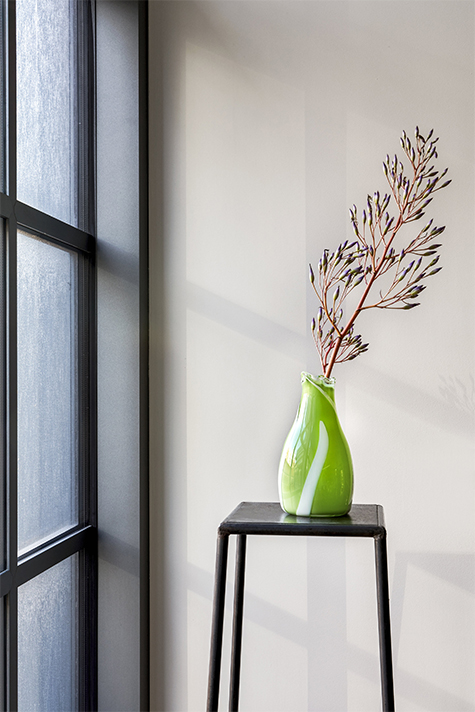
Arnhold has a full-time real estate job which he balances with his stunning creative work!
Image courtesy of: Rebecca Pollack
Arnhold has been refining his glassblowing skills ever since that fateful childhood summer. The artist is drawn to the pace and technique of the art form. The fast-paced environment is necessitated when working with materials that are over 2,000 degrees Fahrenheit. There simply is not enough time to second guess a decision and thus, every creation is a one-of-a-kind piece.
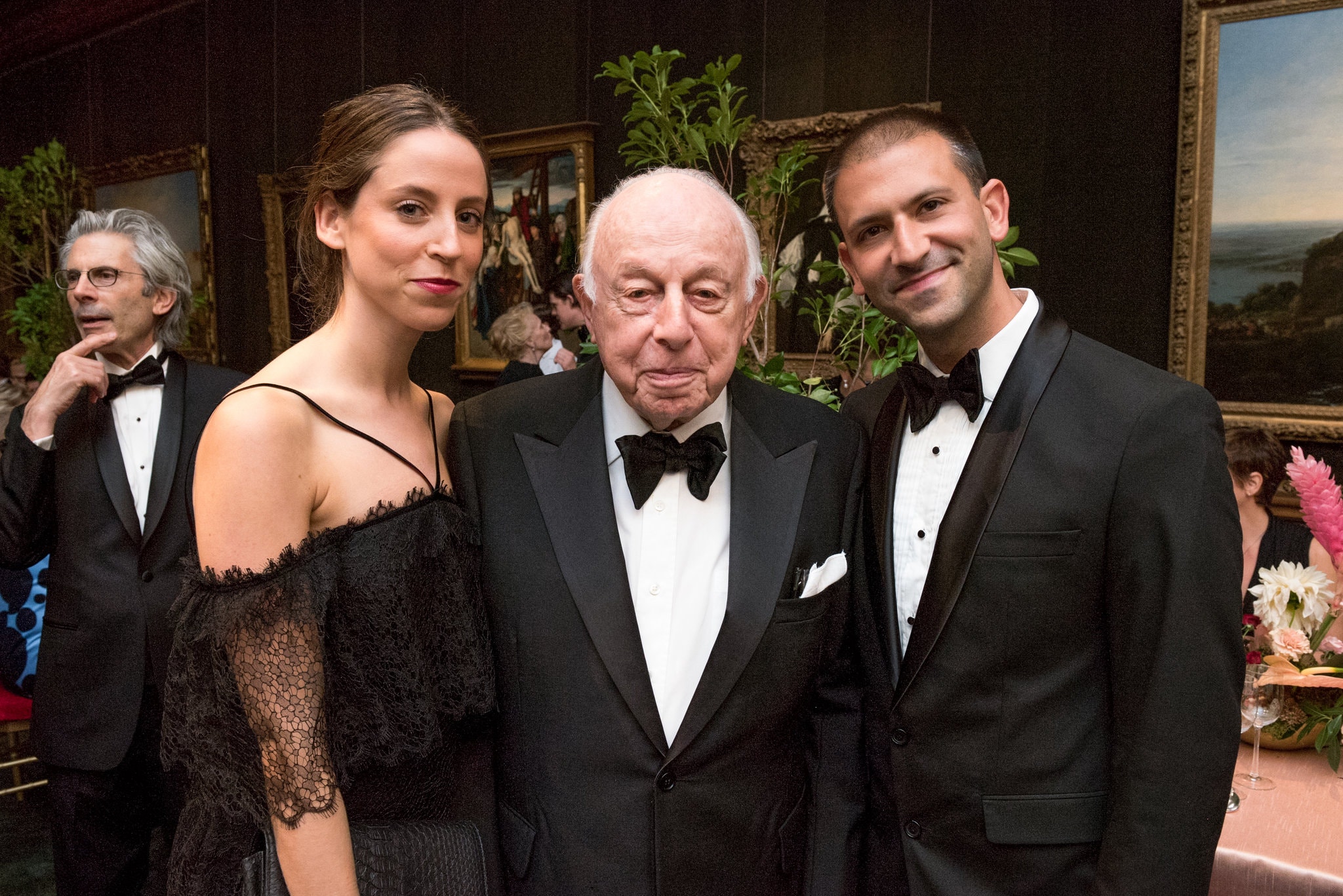
Henry Arnhold with his granddaughter Julia, and his grandson, Paul at a Frick Collection dinner in 2016.
Image courtesy of: The New York Times, photographed by: Christine A. Butler
Arnhold and Gordon are often busy on the New York City social circuit. Just prior to the pandemic, the pair hosted an evening at the Frick Museum in order to celebrate the museum’s collection of Meissen porcelain that was donated by Arnhold’s grandfather. The elder Arnhold amassed a large collection of Meissen porcelain throughout his life, the most special of which was smuggled out of Germany just prior to the Nazi occupation.
Meissen porcelain or Meissen china was the first European hard-paste porcelain, it was produced in 1708. It was natural for the Arnhold family to collect Collection Meissen because it was produced near Dresden, where they lived. The company became Europe’s dominant porcelain manufacturer for many years. To this day, the Arnhold family remains the largest collectors in the world. To that end, Paul Arnhold has clearly taken after his grandfather’s careful and discerning eye.
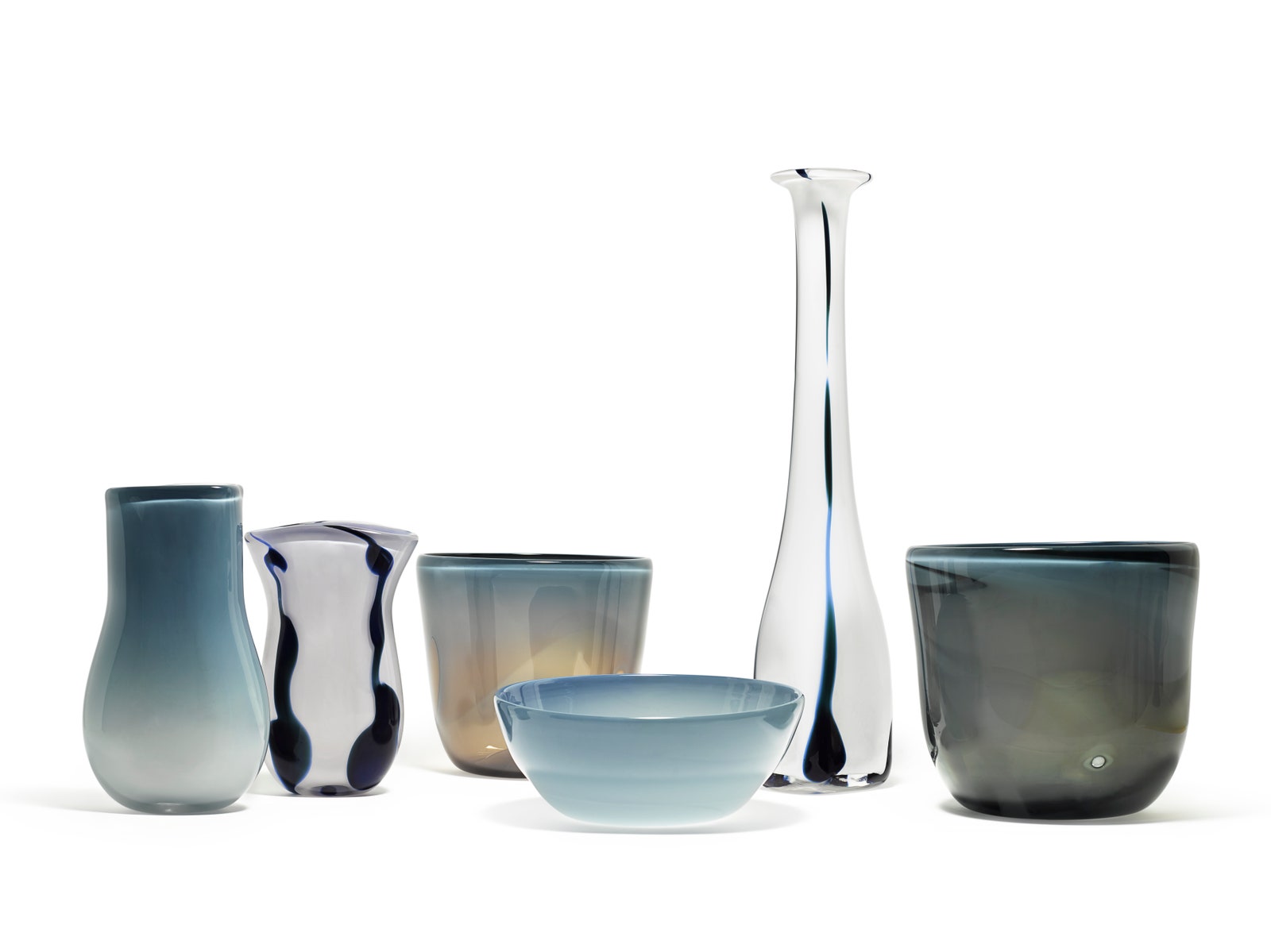
Arnhold does not like to part with his pieces, only often giving away vessels as presents to family and close friends. He says (courtesy of Architectural Digest) “Wes jokes that my goal is to be the world’s largest collector of Paul Arnhold glass.”
In 2017 however, Arnhold was introduced to the famous event planner Rebecca Gardner through his friend Lauren Santo Domingo of Moda Operandi fame. Gardner fell instantly in love with the colorful glass vessels and asked if she could sell them at her holiday pop-up shop. Why not, Arnhold thought, and almost instantly, a curated collection of the beautiful vases and vessels deputed at Gardner’s Sugarplum shop at New York City’s St. Regis Hotel. Sure enough, it was the right decision for both creatives!
A video of Arnhold’s method… he says that he is drawn to glass-blowing because there is a “finishing point,” a finite end.
For an art-form that dates back to Syrian craftspeople in the first century B.C. (or perhaps even earlier) as known from the discovery of glass remnants in Jerusalem’s Jewish Quarter; today, hand-blown glass is trending and treated as an art.
Taking his inspiration from classical silhouettes while adding his personal twist, Arnhold says (courtesy of an article in Sotheby’s International Realty), “I want each piece to be something I’ve never seen before. My best-selling glass is bold and statement-making—playful shapes with interesting color combinations.” Often his work is utilitarian. “You can take a wavy bowl off the coffee table, fill it with crushed ice, and use it to serve caviar. Or you can fill a vessel with freshly cut flowers.” Unlike mass-produced items, hand-blown glass is irresistibly imperfect.”
